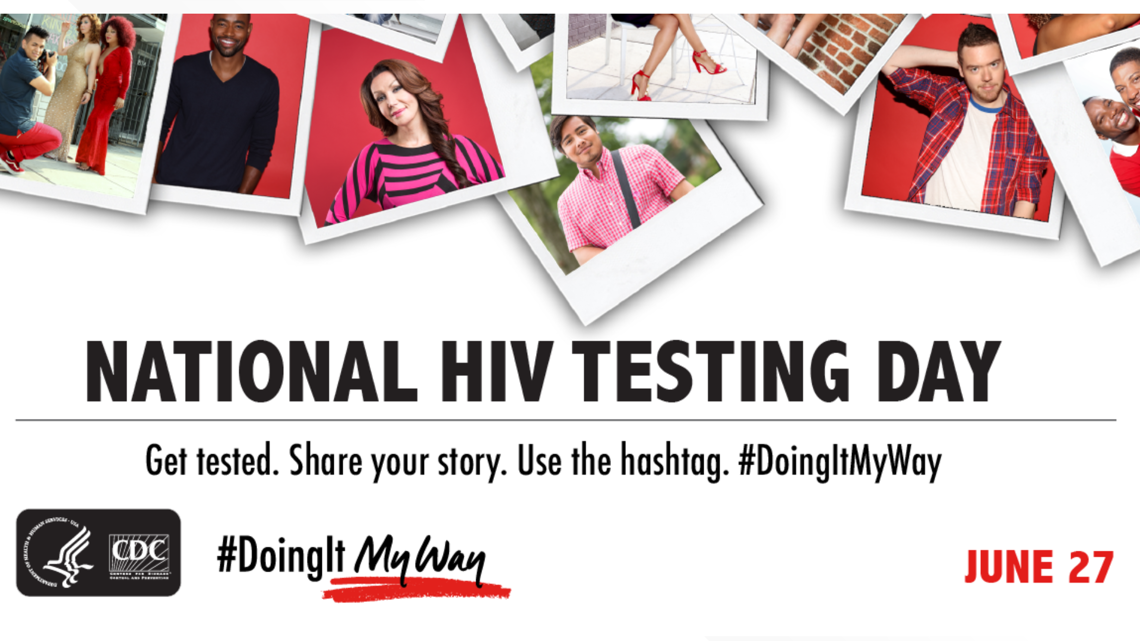Common STI's in China: Symptoms, Treatment & Prevention - The Beijinger
Common STI's in China: Symptoms, Treatment & Prevention - The Beijinger |
- Common STI's in China: Symptoms, Treatment & Prevention - The Beijinger
- 7 STD Symptoms You Should Know About, According to Experts | Health.com - Health.com
- Reports of many STDs fell in North Dakota in 2020 — but not all - Grand Forks Herald
- DHEC to offer free HIV, STD testing in recognition of National HIV Testing Day - WLTX.com
| Common STI's in China: Symptoms, Treatment & Prevention - The Beijinger Posted: 25 Jun 2021 11:30 PM PDT  STI & STD Acronyms DemystifiedWe hear these two terms being used interchangeably. But what's the difference? STIs are sexually transmitted infections. Well, STDs are sexually transmitted diseases. If an infection leads to symptoms, then we say you have an STD. What's Common in CHINA?Globally, there are millions of cases of sexually transmitted infections (STIs) every year and China is no exception. Traditional concepts believe infections can only be passed person to person through some form of sexual activity, but STIs can also be passed through non-sexual means! China's most common STIs, in order of occurrence in 2008, were Syphilis, Chlamydia, Human Papilloma Virus/Genital Warts (HPV), Gonorrhea and Genital Herpes (HSV). (Source: The increase of sexually transmitted infections calls for simultaneous preventive intervention for more effectively containing HIV epidemics in China, 2014). Numbers are increasing, and so too is drug resistance!In China, since the 1980s, STIs have shown dramatic increases, with annually reported STI cases increasing from 23,534 in 1986 to 859,040 in 2000. Syphilis having been largely eliminated in the 1960s in China, through free screening and treatment, made a dramatic comeback to one of its top STIs nowadays. In one study carried out in Guangzhou on a particular strain of Syphilis, drug resistance to penicillin, tetracycline and ciprofloxacin was as high as 85%, 85% and 78% respectively in 2001, progressing to 81.9%, 100% and 98.4% in 2011, respectively. (Source: 2014 Royal College of Obstetricians and Gynecologists) Please note: having HIV/AIDS, syphilis and gonorrhea are reportable STIs according to the Law of the People's Republic of China, meaning that statistics will be shared by hospitals to the government.
|
| 7 STD Symptoms You Should Know About, According to Experts | Health.com - Health.com Posted: 27 Apr 2021 12:00 AM PDT  this link is to an external site that may or may not meet accessibility guidelines. |
| Reports of many STDs fell in North Dakota in 2020 — but not all - Grand Forks Herald Posted: 26 Jun 2021 07:00 AM PDT The latter included gonorrhea, with North Dakota showing a 10% increase in 2020, while Minnesota case numbers rose by 27% last year, according to figures provided by state health departments. And although syphilis cases fell about 18.5% in North Dakota last year and Minnesota saw 3% fewer cases, the disease nonetheless remains a serious threat in those states and across the country, according to Shari Renton, surveillance coordinator for sexually transmitted diseases for the North Dakota Department of Health. Renton said that about a decade ago syphilis rarely, if ever, occurred in North Dakota. "But now, it's definitely skyrocketing at really alarming levels. A big part of that is it's not on everyone's minds," Renton said. "They call it the great imitator, because the symptoms can mimic many other conditions. So, if people aren't thinking syphilis, it can often get missed," added Renton, who said North Dakota reported three cases of congenital syphilis in 2020, the first time such cases had been seen in the state in a decade. She said the disease can be prevented in babies if the disease is detected early enough in pregnant mothers for treatment to begin and she said it is also beneficial to screen mothers at the time of birth so it is known whether a baby has been exposed to the disease. "We are seeing syphilis more in women than ever before," Renton said, adding: "Before, we'd often see it with men who have sex with men and now it's really spilled into the female population as well." While the overall case numbers of syphilis declined in Minnesota last year, the early, more symptomatic stages increased 8% from 2019 to 2020. Statewide in Minnesota, seven cases of congenital syphilis were reported in 2020, a 66% drop from 2019. Minnesota health officials also said syphilis outbreaks in Cass and Beltrami counties remain a critical concern. Renton said it is difficult to say what accounts for the rise in gonorrhea cases in 2020 and the ongoing challenges represented by syphilis, but she said lack of condom use is an issue. In the case of gonorrhea, Renton said increased drug resistance could account for some of the increase in infections detected in 2020, adding that the fact treatment must be done in a provider's office may also account for why rates of infection increased last year. For other STDs, the numbers for 2020 showed an 11% decrease in chlamydia cases in both North Dakota and Minnesota, while new HIV cases dropped by nearly 17% in North Dakota and by 18% in Minnesota. Health officials said the numbers for 2020 reflect some uncertainty, as the pandemic may have affected how many people were tested compared to past years. "During the time of the pandemic it's hard to know if overall testing was down. We know that testing was down with our public health lab," Renton said, noting that because many people infected by an STD don't show symptoms, regular screening is wise. "Everyone really should speak with their health care provider to see what risk they might be at and what things they can do and then definitely get screened," Renton said. |
| DHEC to offer free HIV, STD testing in recognition of National HIV Testing Day - WLTX.com Posted: 26 Jun 2021 08:42 AM PDT  The theme of this year's National HIV Testing Day is "My Test, My Way" to raise awareness about the different options available for getting tested. COLUMBIA, S.C. — National HIV Testing Day is June 27, 2021, and the South Carolina Department of Health and Environmental Control (DHEC) is encouraging South Carolinians to get tested for HIV and other STDs so they know their status and can protect their health. The theme of this year's National HIV Testing Day is "My Test, My Way" to raise awareness about the different options available for getting tested for HIV, whether it's self-testing at home or getting tested at a nearby location. "Early detection through testing for HIV remains essential to successfully identifying and treating the disease and is critical to preventing new infections," said Ali Mansaray, Director of DHEC's STD/HIV and Viral Hepatitis Division. "Most people in the early stages of HIV infection have no symptoms." To encouraging people to get tested for HIV and other STDs, DHEC is offering free testing at participating local health departments on June 29. Appointments are encouraged. Call 1-855-472-3432 or use DHEC's online web chat to schedule an appointment. If you are over the age of 17 and prefer the privacy of in-home testing, you can order up to two free test kits by visiting together.takemehome.org. The Centers for Disease Control and Prevention (CDC) is covering the cost of HIV self-tests so that you can use them to test yourself or to share with others. No personally identifiable information will be shared with CDC. For more information about STDs and locations that provide screenings, call DHEC's STD/HIV Hotline at 1-800-322-2437, or visit DHEC's website at www.scdhec.gov/stdhiv. |
| You are subscribed to email updates from "signs of std" - Google News. To stop receiving these emails, you may unsubscribe now. | Email delivery powered by Google |
| Google, 1600 Amphitheatre Parkway, Mountain View, CA 94043, United States | |


Comments
Post a Comment